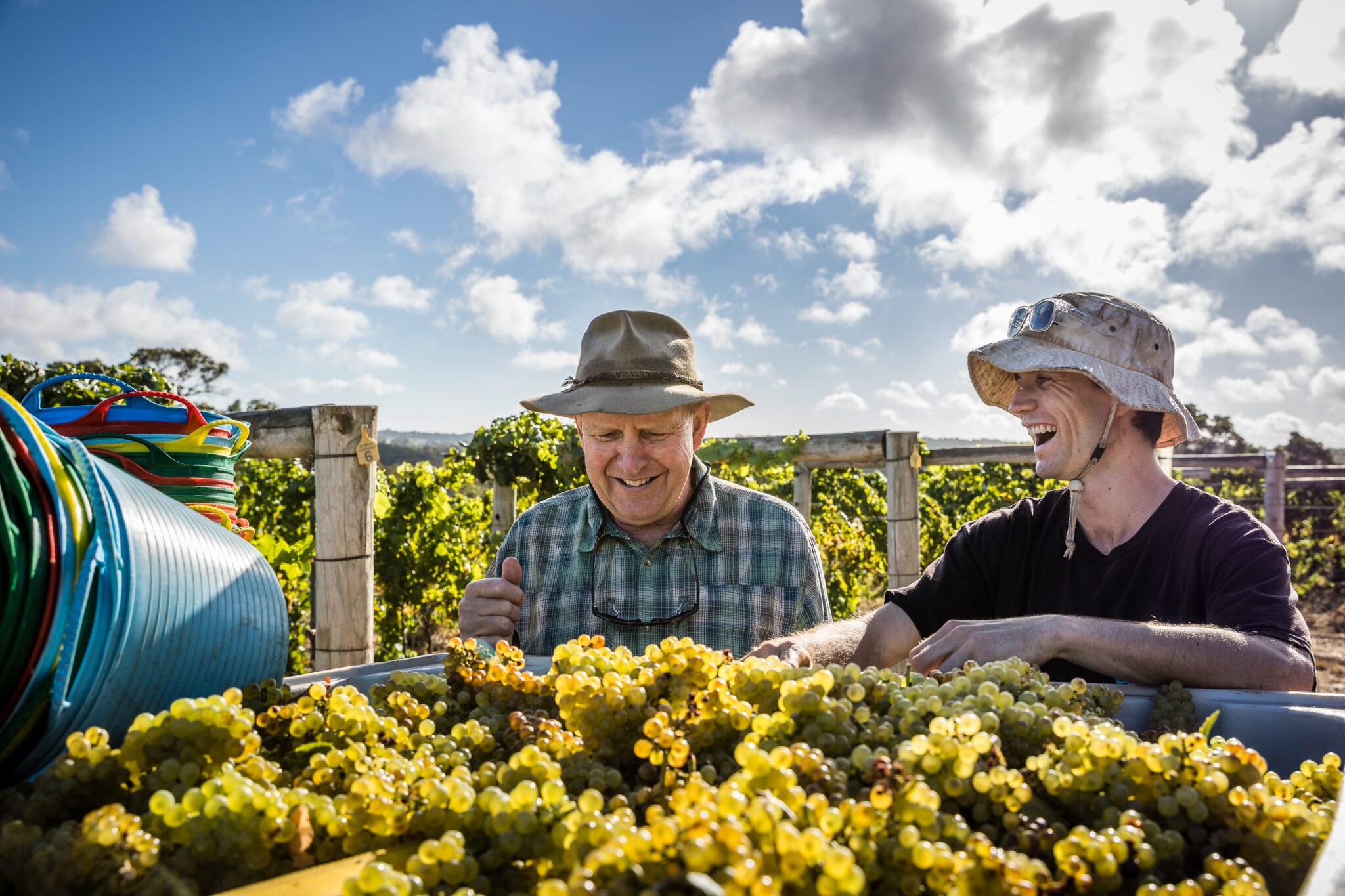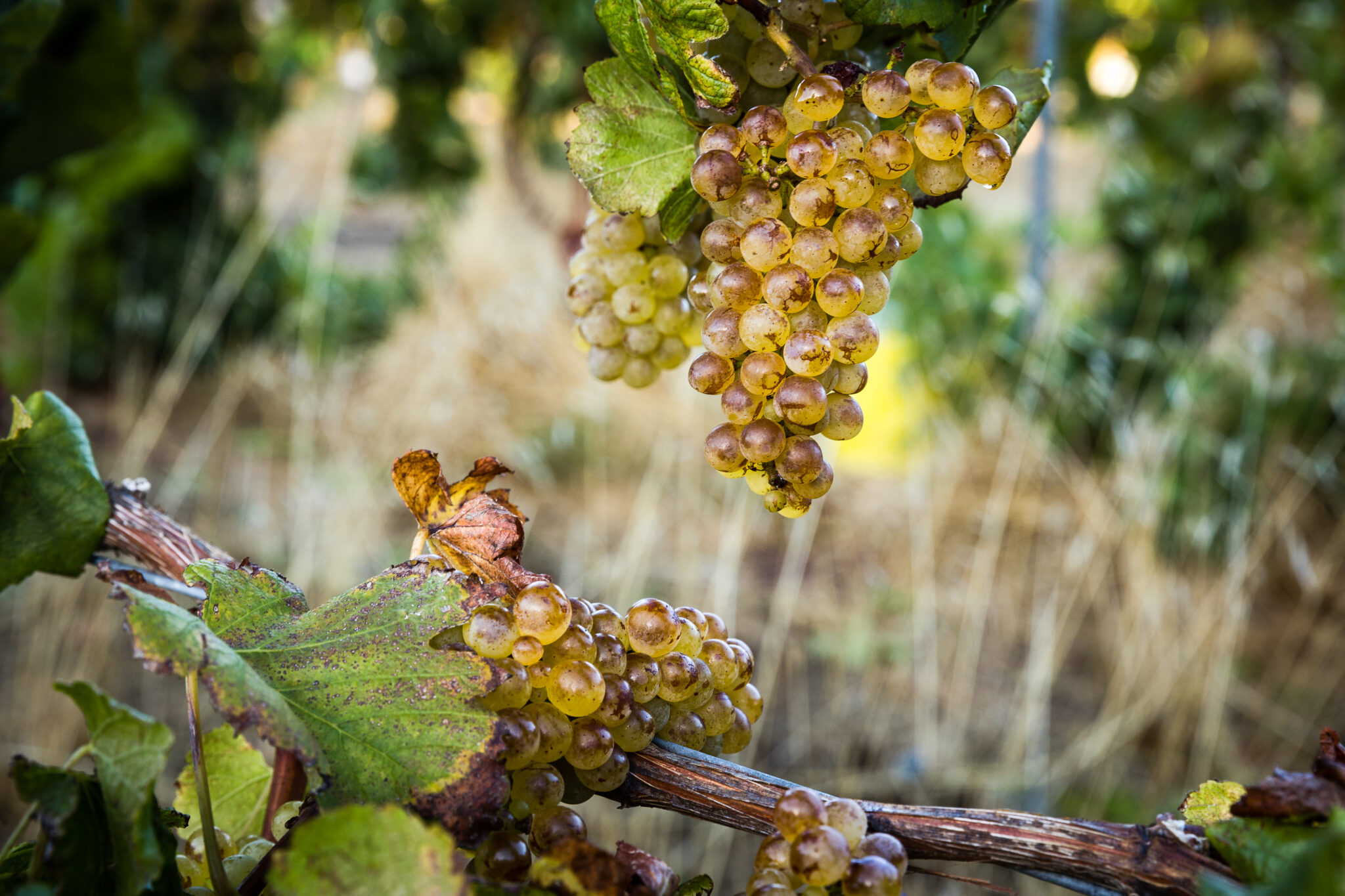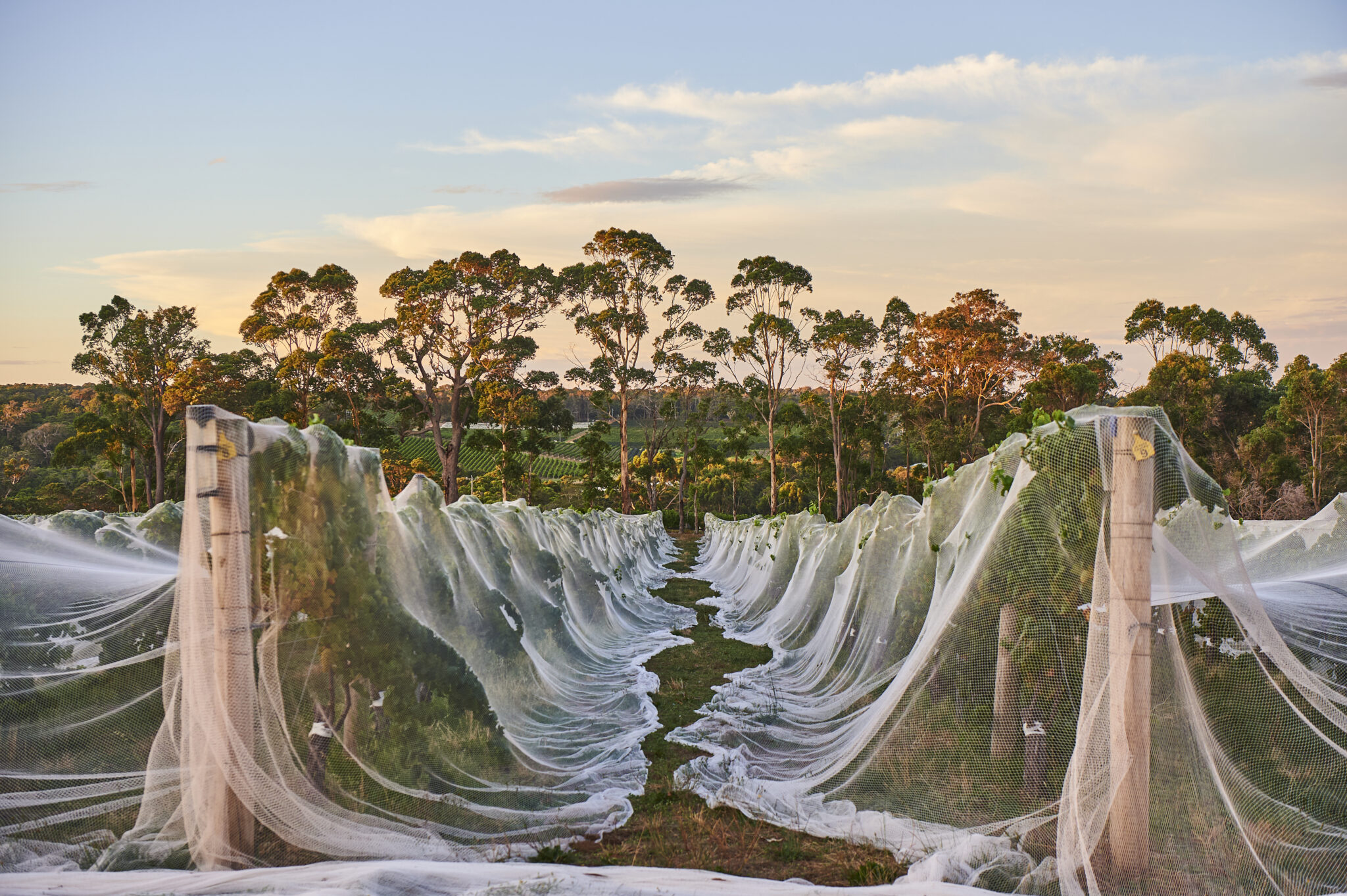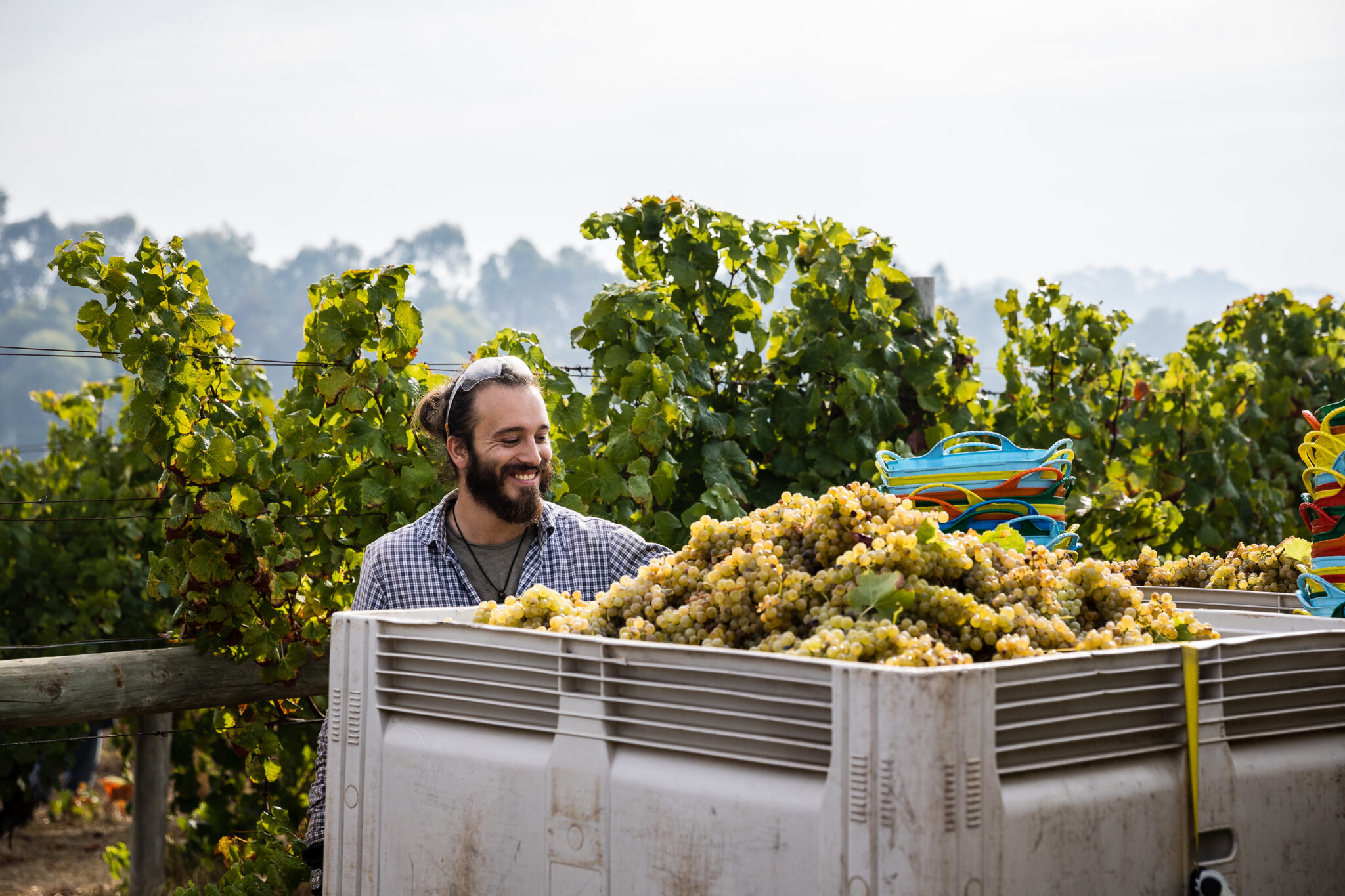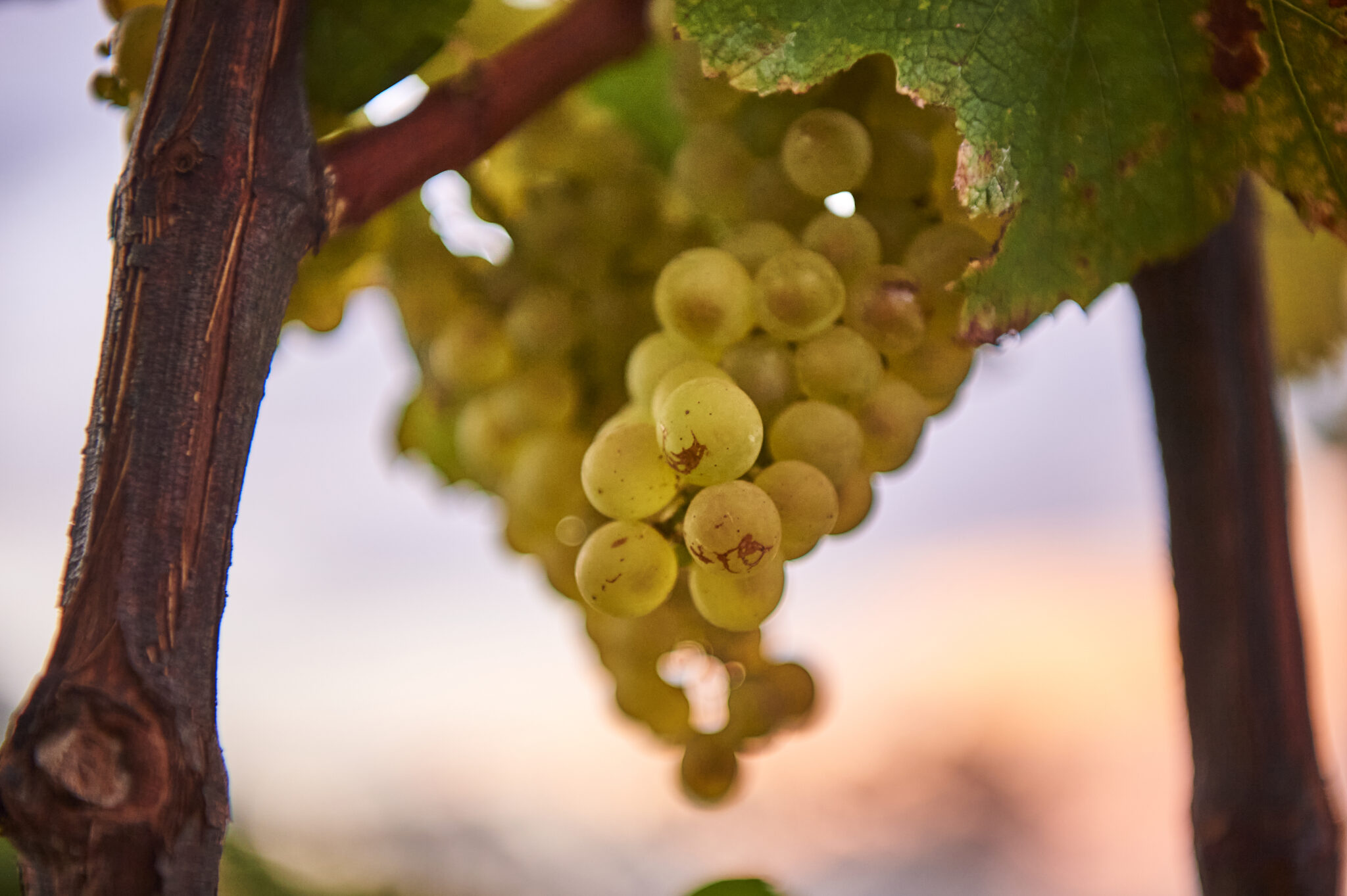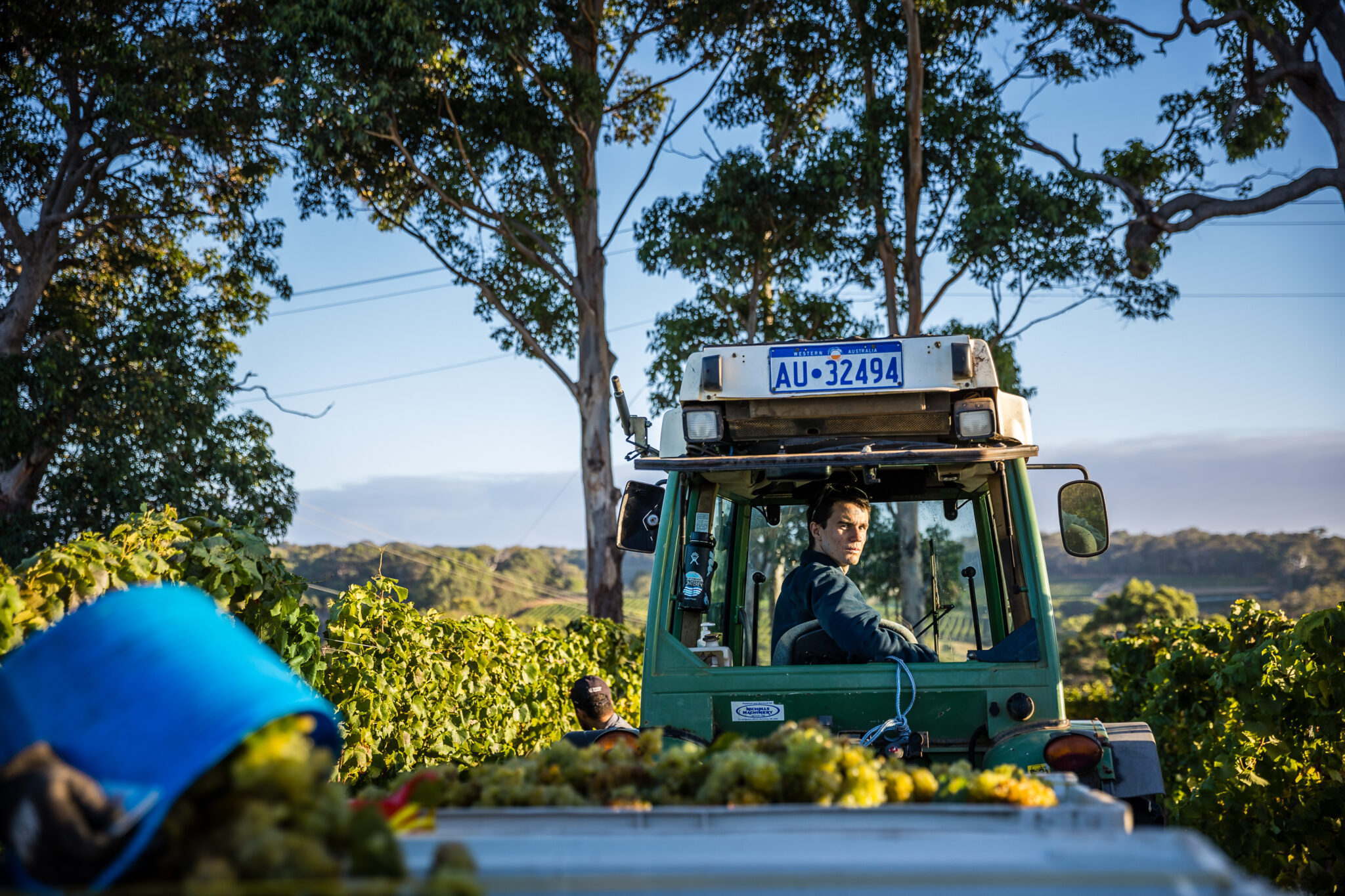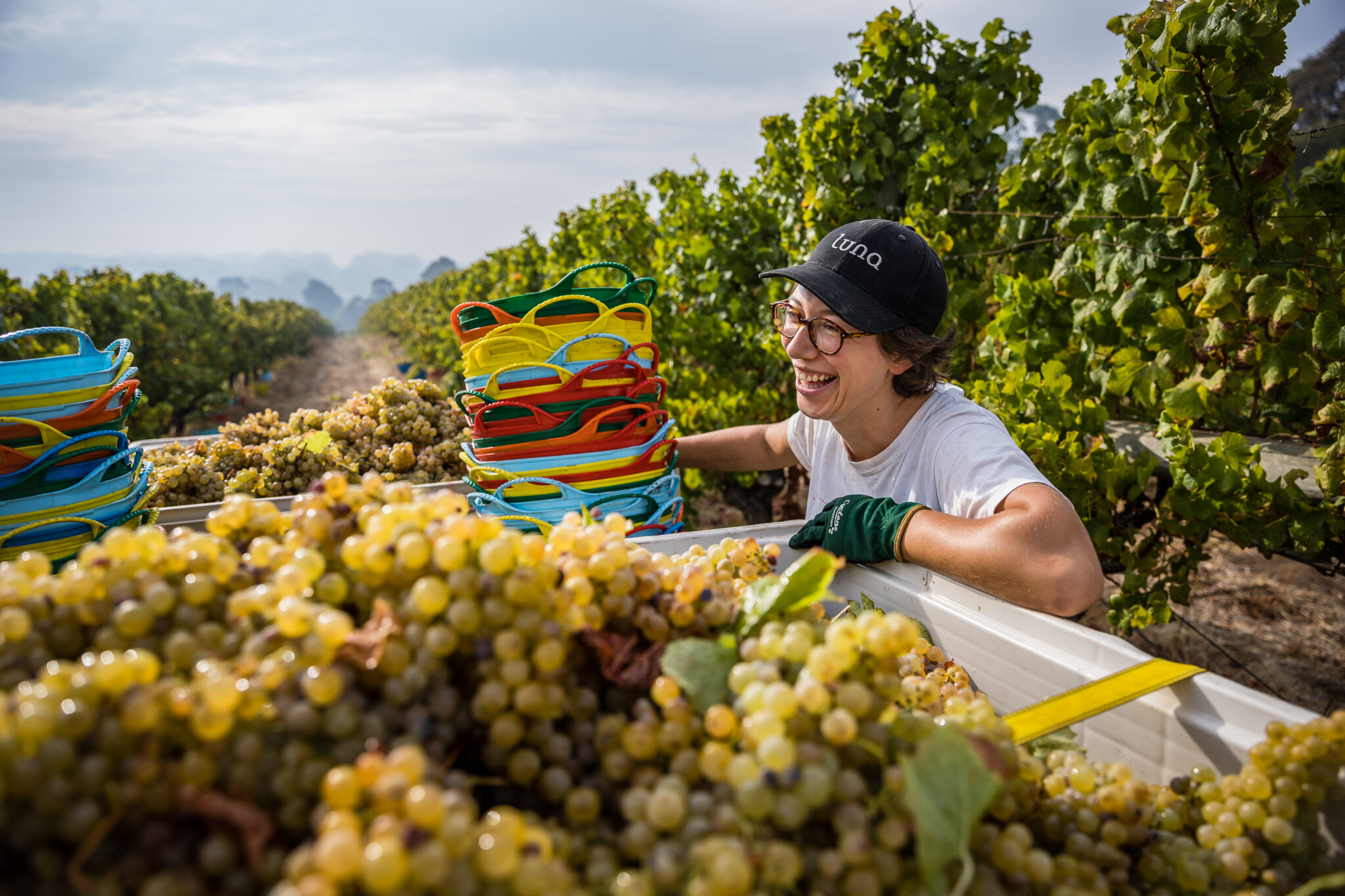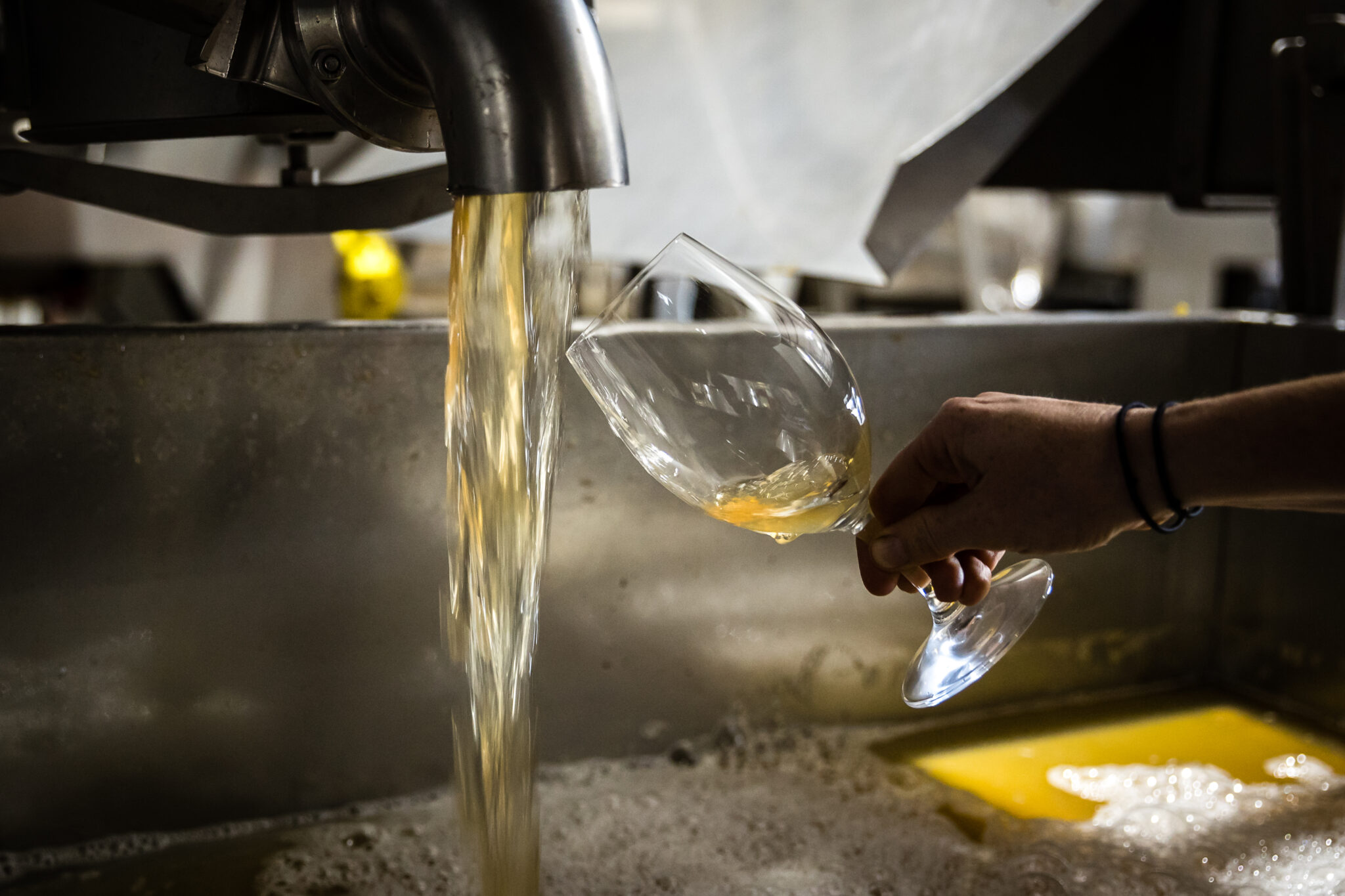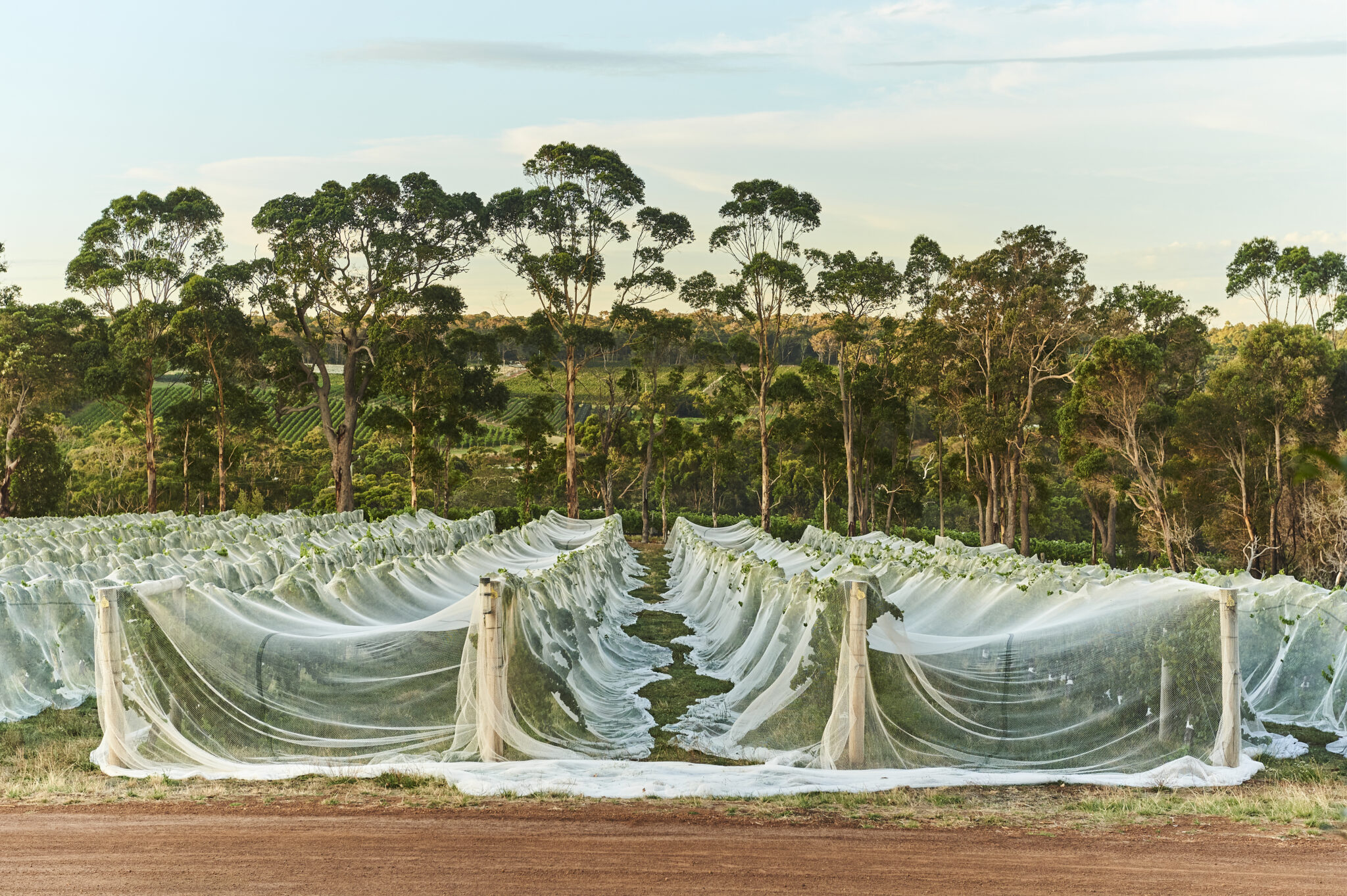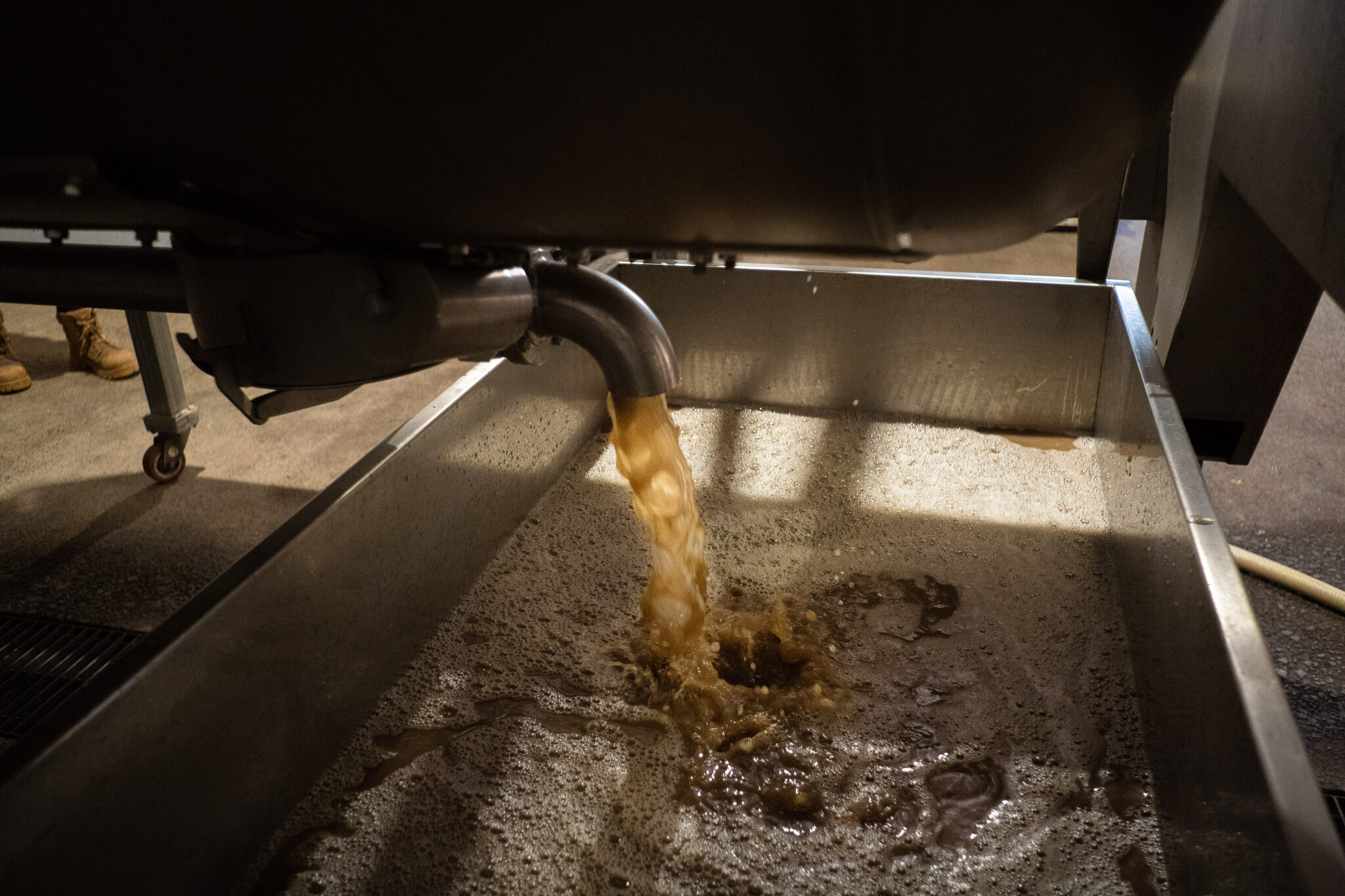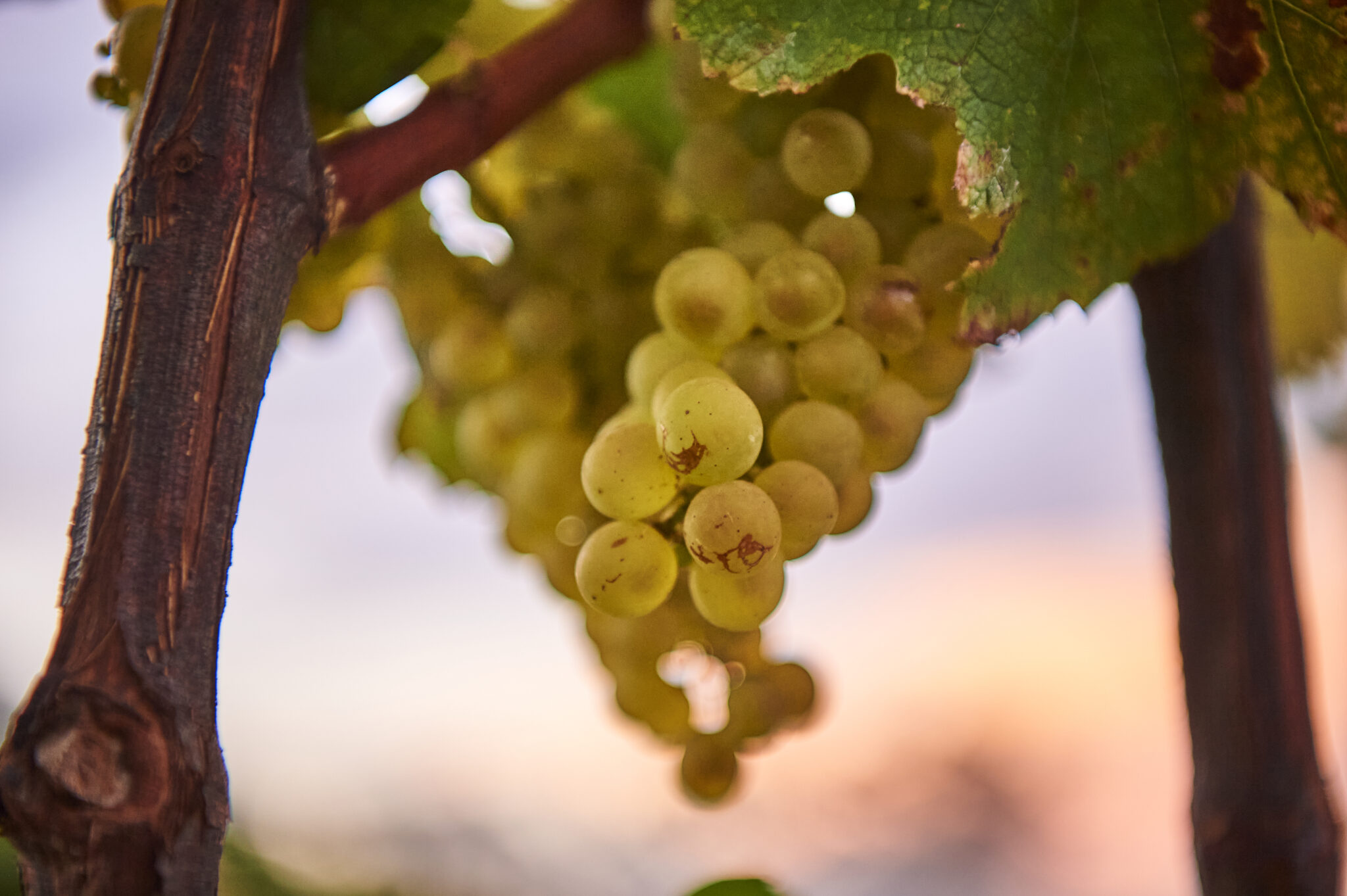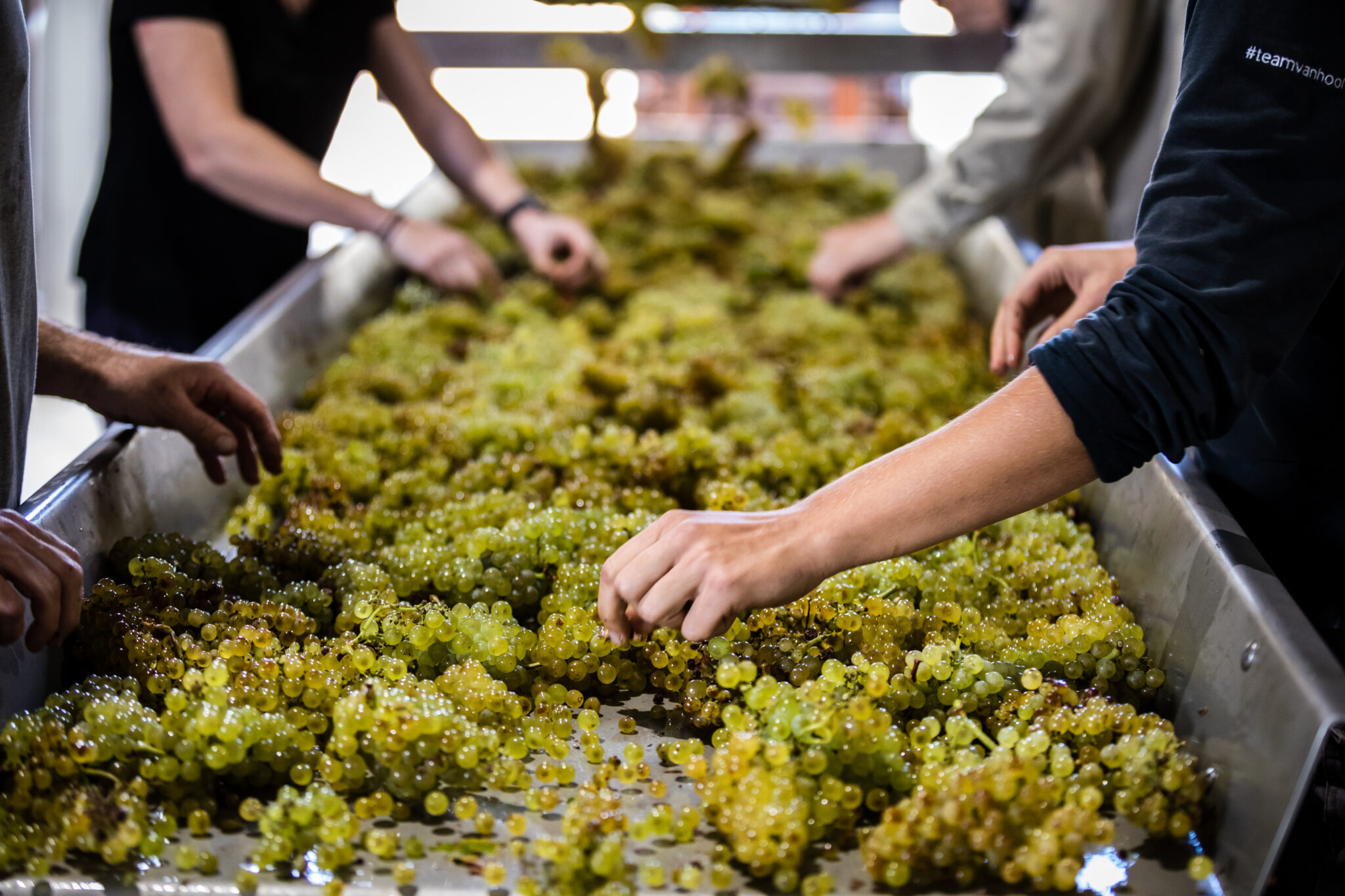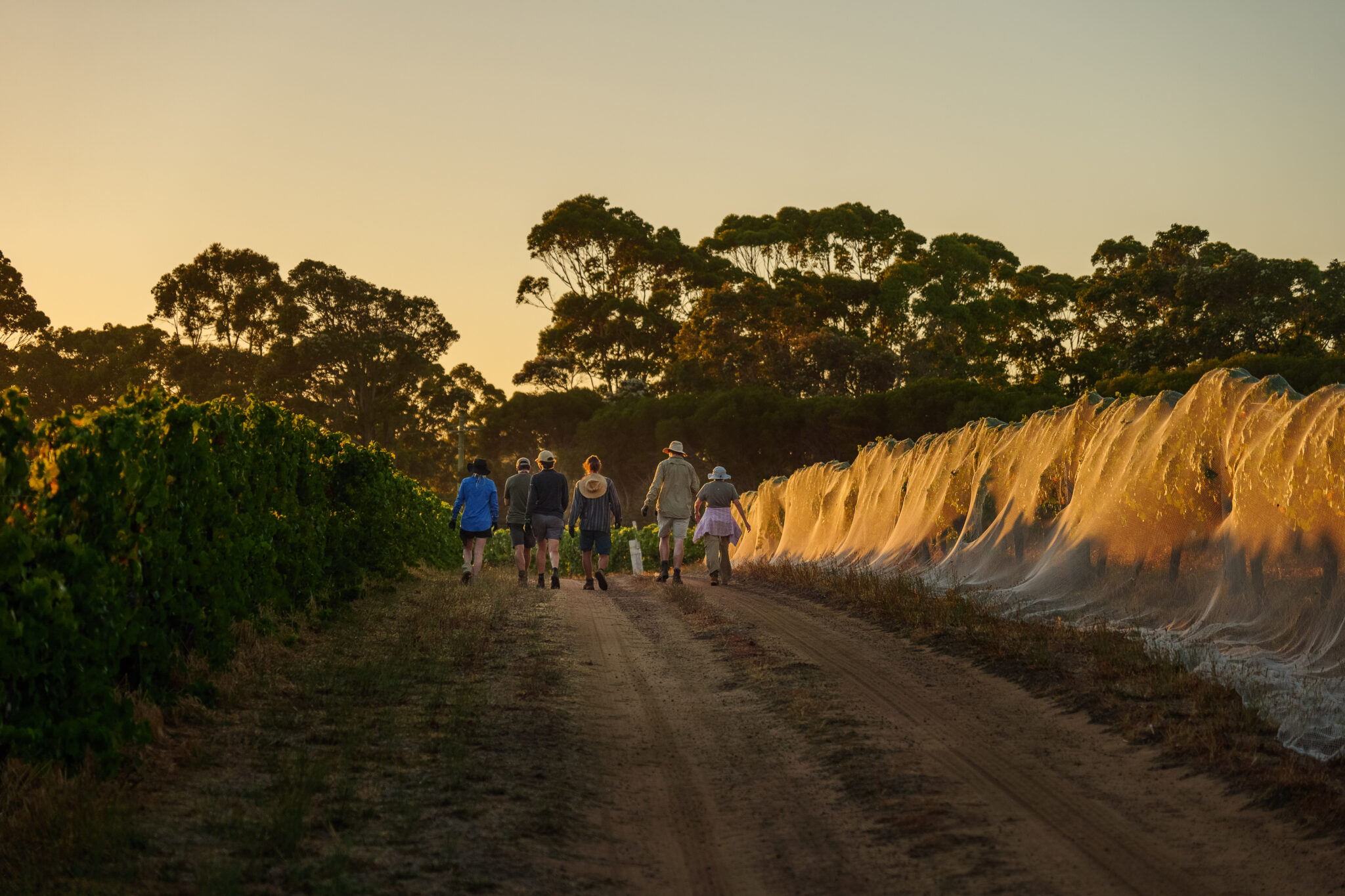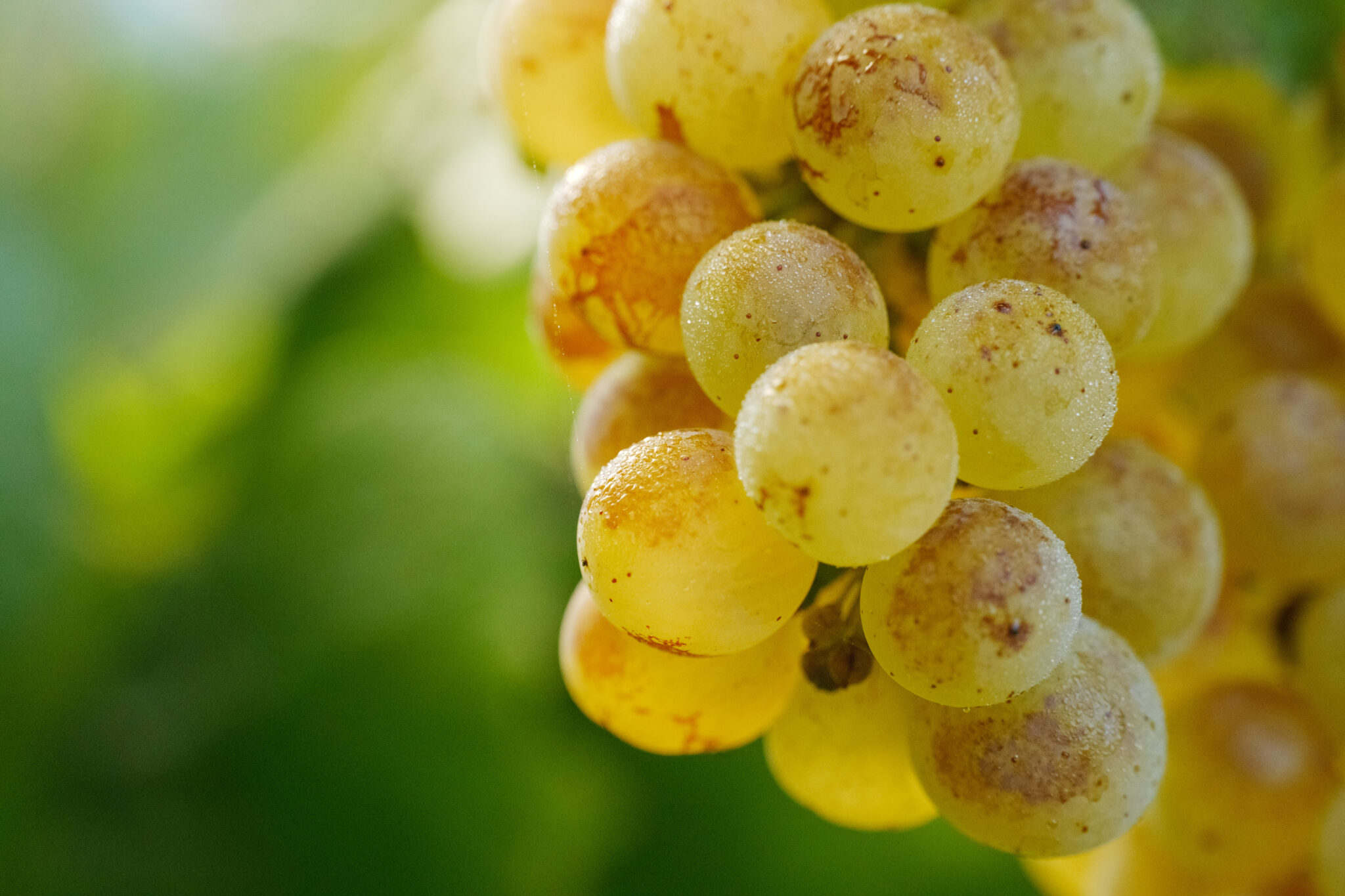Moss Wood Newsletter
Summer News Issue # 116 FEBRUARY 2023
Ribbon Vale Elsa and Ribbon Vale Chardonnay 2022
2022 Ribbon Vale Vintage
VINTAGE NOTES
The 2021-2022 growing season was one of contrasts. If wet weather is your thing, then calendar year 2021 was the year for you. Moss Wood received 1440mm of rain, more than 40% above average. We understand that we live in a relatively well-watered place but this was approaching the ridiculous. That said, it’s probably a bit weak of us to complain given the very trying conditions experienced during the recent heavy rains and accompanying floods experienced in south eastern Australia. Our slightly boggy vineyards were insignificant by comparison.
As winter turned to spring, cool, damp conditions continued to prevail right up to flowering, which was about a week late. However, any concerns we had about the impact of inclement weather were quickly resolved when Mother Nature threw the switch to dry and the contrast began. Having received 1417mm rain to end of October, only 23mm fell for the rest of the year.
Temperatures remained mild until the end of December which meant there were some cool nights. During the Chardonnay flowering, the mercury dropped below 8°C on 6 occasions and for Sauvignon Blanc on 4, so conditions were relatively benign. Both varieties recorded near average bunch weights.
The contrast went even further by Christmas. We enjoyed nice warm days through December but nothing particularly hot. On 25th December our maximum reached 37.6°C and then on Boxing Day, we had our warmest day since 25th February 1985, when we topped out at 41.2°C. The heat then eased until mid-January, when we had another warm one of 40.1°C on 19th but that signalled the end of the really warm weather. From this point, we rolled into vintage enjoying warm clear days, with virtually no rain to interrupt things.
Despite the 2 bursts of heat, ripening was slow and steady and harvest dates were slightly behind average, with Sauvignon Blanc coming in 8 days late on 7th March and Chardonnay came off on 17th.
Our winemaking techniques for these wines continue to evolve. In 2022, as with Moss Wood Semillon, both musts were clarified using flotation as opposed to cold settling. In speeding things up, apart from significantly reducing our energy usage, this also reduces some of the oxidation associated with having juice waiting in tank for several days. The net result is increased fruit freshness at the time of clarification and then stronger aromas in the finished wines.
It could be said that at Moss Wood we’re innovative traditionalists. It sounds contradictory but by this we mean we’re happy to embrace new technologies, in both the vineyard and the winery, wherever we see a quality advantage over our traditional approach. This meant, for example, when the research showed the clear quality benefits provided by the improved vine canopy of the Scott Henry trellis, we converted all our vineyards to that system. In contrast, hand-plunging of small-batch, open fermenters continues to be the best process for extracting colour and flavour in red wines and it dates all the way back to our first vintage of Moss Wood Cabernet Sauvignon in 1973. Nothing better has come along to replace it.
Returning to the point, flotation is not a new technology but until recently, it had only been a large-batch operation and suitable equipment was not available for small wineries. That has now changed and we’ve happily embraced it.
For Ribbon Vale Chardonnay, our style requirement is somewhat clearer because we’ve accrued so much experience with Moss Wood. At the same time, we’re still learning because the two vineyards are quite different and not all the historical knowledge is easily applied. Nevertheless, our preference is for chardonnay’s riper fruit spectrum, with the emphasis on stone fruit and nuts and this occurs at just over 13% alcohol equivalent, which is similar to Moss Wood but here’s a curious thing. Despite the vineyards being only one kilometre apart, Ribbon Vale ripens roughly 2 weeks later. This, of course, makes it just that bit more challenging, while we wait and watch the weather, hoping things stay fine.
Our preferred ripeness for Sauvignon Blanc is now not less than 12.5 and not more than 13.0° Baume and with the 2022, we landed right in the middle. That was either good luck, or good management, but we’ll take the latter. Essentially, we want to pick the fruit green enough to provide zestiness but it still has to be ripe enough to provide generosity and weight on the palate. It’s a delicate balancing act.
Production notes
Both varieties were hand-picked and delivered to the winery, where the technique was the same for both wines. The fruit was sorted and whole-bunch pressed and the juice was then clarified and seeded with multiple yeast strains for primary fermentation, which commenced in stainless steel tanks, where temperatures were controlled to a maximum of 20°C. At the halfway stage, when the process has slowed, the fermenting must was transferred to barrel and allowed to finish at ambient. All the barrels were 228 litre French oak.
On the point of barrel aging, we kept things the same with the 2022 Elsa, using only 6% new oak. We are only looking for a small oak influence and want it to sit well in the background of both the nose and palate.
With the 2022 Ribbon Vale Chardonnay, we pushed the new oak component up to 50%. The reason is quite simple. It was clear very early on that the intensity of the fruit aromas was much stronger in ’22 and we felt the wine would carry more new oak without being dominated and are delighted with the result.
Both wines went through full malolactic fermentation and once completed, each batch was blended, dosed with sulphur dioxide and returned barrel.
Oak aging continued until 3rd January 2023, 9 months in total, when both wines were racked and blended in stainless steel tanks. Fining trials were carried out to see if we could improve the tannin balance in the wines but none of the treatments offered improvement. They were then fined with bentonite for protein stability, cold stabilized and sterile filtered and bottled on 13th January 2023.
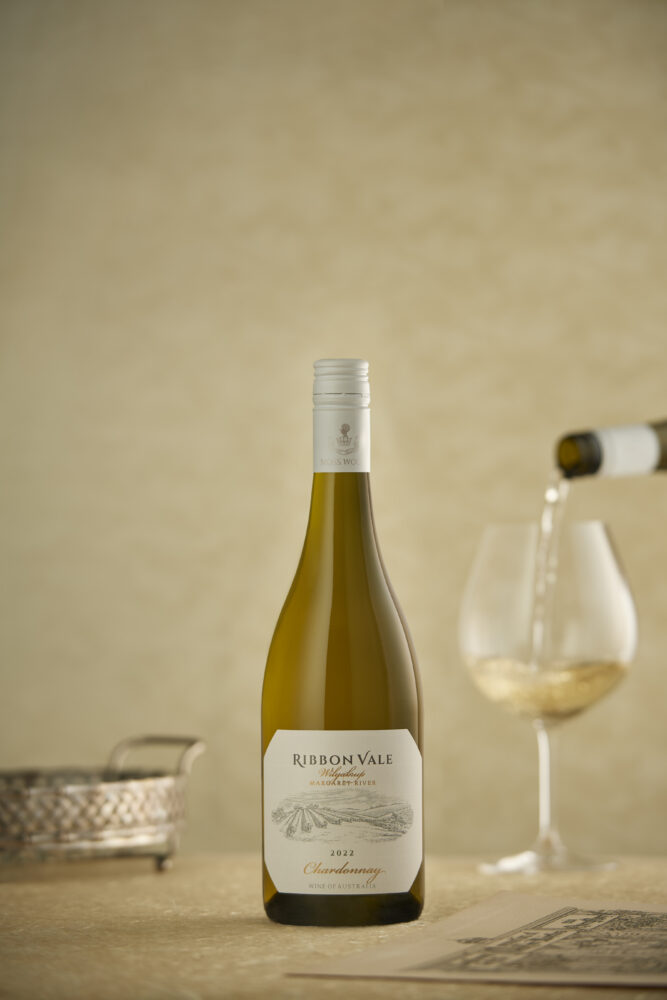
Ribbon Vale 2022 Elsa
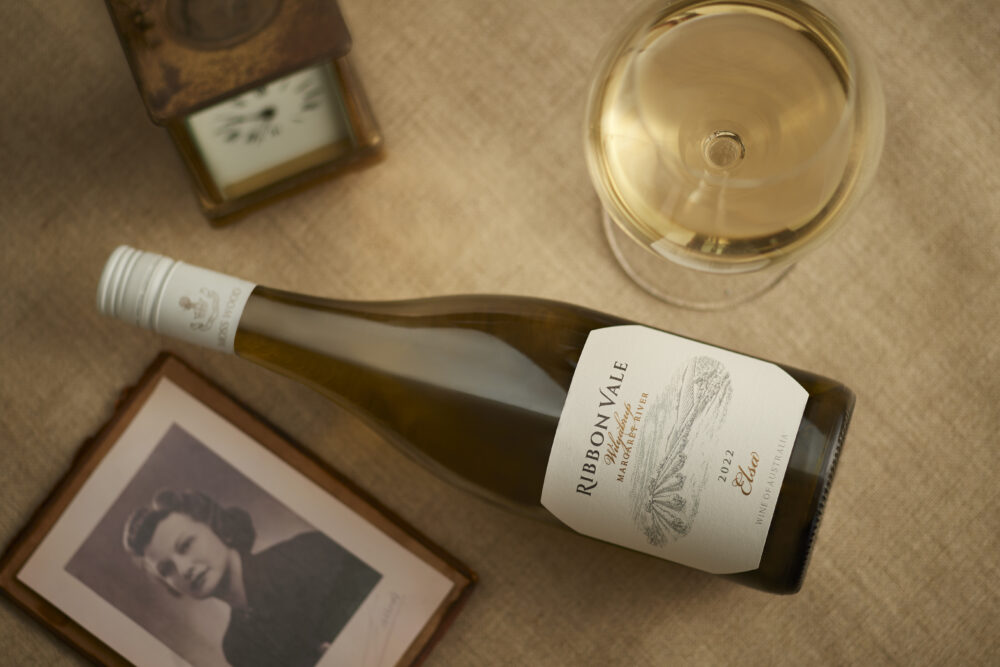
Tasting Notes
Colour and Condition:
Light straw hue, with green tints; bright condition.
Nose:
The aromas are a lively combination of orange blossom, nashi pear, honeydew melon, cinnamon, gooseberry, guava, caramel and light toasty oak. The emphasis is on vibrancy and freshness but it is noticeably complex as well.
Palate:
The impact of the flavour array is immediate as guava, leaf, lemon curd, honey and caramel spread out over a palate of medium to full body. The richness makes the wine almost lazy. Nevertheless, there is fresh acidity assuring brightness and good length. The finish has soft tannin and very light toasty oak note.
CELLARING
There is no doubt the wine has the fruit and depth and composition to age extremely well and we recommend at least 10 years to ensure the development of a classic Sauvignon Blanc bottle bouquet of crème brulee and buttered toast, with a touch of lanolin for good measure. In the meantime, the wine can be enjoyed for its attractive youthful freshness.
| Wine Facts | |
|---|---|
| Median Harvest Date | 7th March, 2022 |
| Mean Harvest Ripeness | 12.7° Be |
| Yield | 9.7 t/ha |
| Ripening Time from Flowering to Harvest | 97 days |
| Bottled | 13th January, 2023 |
| Blend | 94% Sauvignon Blanc 6% Semillon |
| Alcohol | 13.0% |
Ribbon Vale 2022 Chardonnay
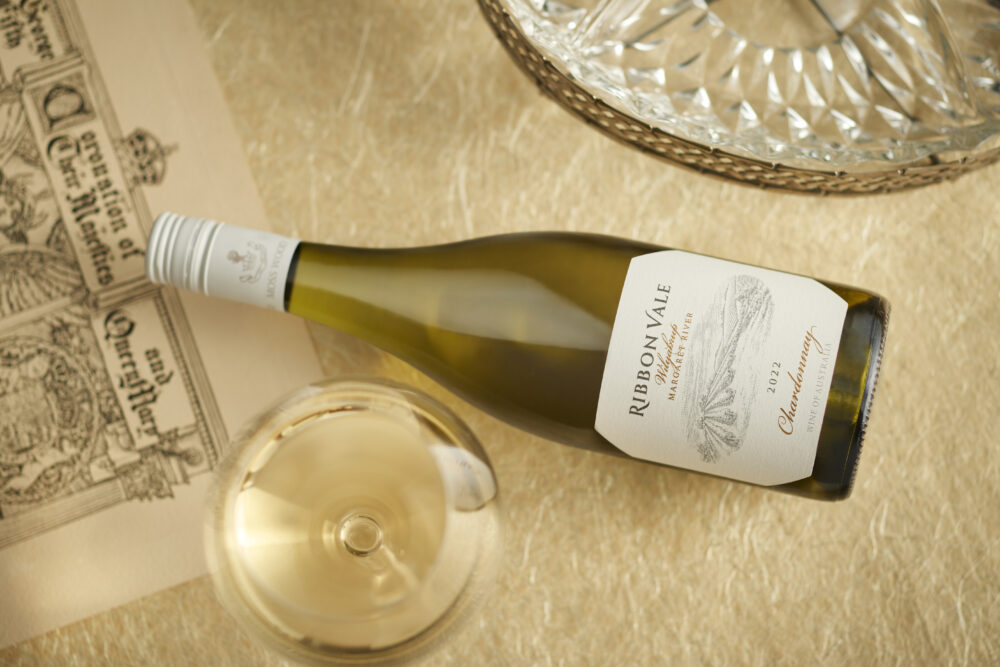
Tasting Notes
Colour and Condition:
Light to medium straw hue, with green tints; bright condition.
Nose:
Also, a nose with a broad array of aromas, including prunes, nectarine, musk, limes, marmalade, roast nuts, vanilla ice-cream and toasty oak. Quite the combination!
Palate:
The palate is immediately generous, with full body underpinning flavours of limes, peach, apricot and caramel. There is good length and fresh acidity that ensures a zesty lift. The finish has soft tannins and a touch of toasty oak.
CELLARING
At this stage of the discussion, it’s always a dilemma resolving exactly how long a Chardonnay must be cellared for. Our point is the wine has terrific youthful balance and generosity and can be enjoyed now. However, it will certainly age well but will need at least a decade to show its bottle bouquet. When it does the nose will add layers of buttered toast and the structure of the palate will soften, making it much rounder and even more generous.
| Wine Facts | |
|---|---|
| Median Harvest Date | 17th March, 2022 |
| Mean Harvest Ripeness | 12.8⁰ Be |
| Yield | 5.09 t/ha |
| Ripening Time from Flowering to Harvest | 123 days |
| Bottled | 13th January, 2023 |
| Alcohol | 13.50% |
2022-2023 Growing Season
We’re very pleased to report good progress with the current season. Rainfall during 2023 was excellent, with 1114mm falling, just over 10% above average, so there is plenty of moisture in the soil for our dry-grown vines. Spring temperatures were quite mild and we received some rain through the flowering period but generally, conditions have been excellent. There is no disease in the vineyard and we’ve got our nets out to protect the fruit from the birds. The silvereyes may become more of an issue as the season progresses because there is very little of their normal food, the blossom on the Marri trees, to keep them away from the grapes.
The lower temperatures mean all varieties were about one week late at flowering and conditions since have been very comfortable and the vines haven’t had much of an opportunity to make up the gap. At the time of writing, it looks like we’ll start picking with Pinot Noir, sometime between the 20th and 25th February.
All up, it’s a very promising year and we have our fingers crossed.
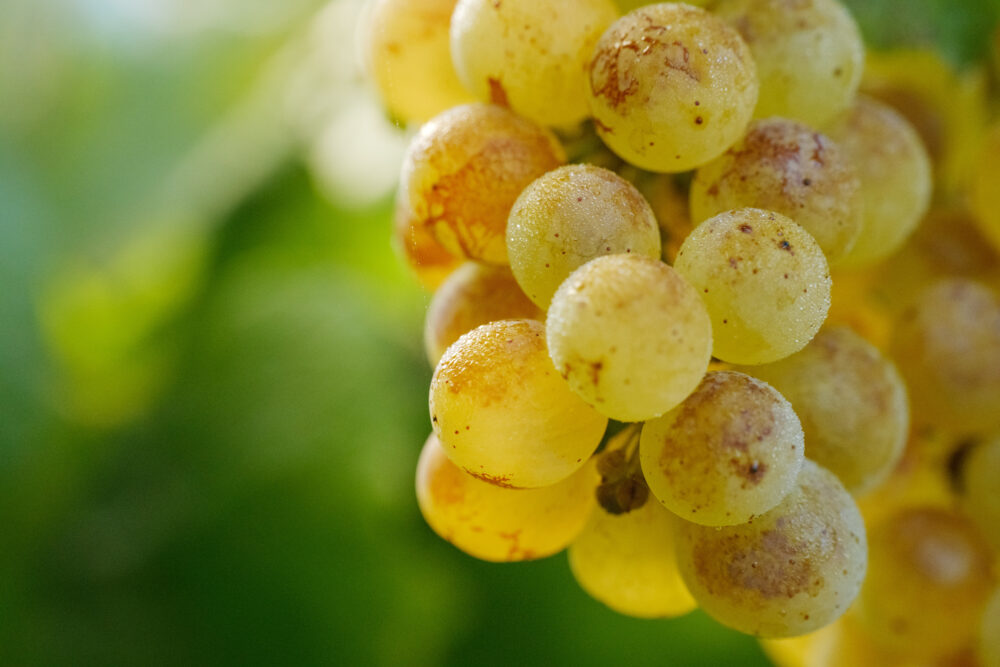
Changes to Ribbon Vale Livery
Long-term Moss Wood followers would be aware of the Ribbon Vale story, but we revisit it here in order to explain some of the changes in the branding of these new releases. The Mugford family purchased Ribbon Vale vineyard in March 2000 and have been making the wines from the property ever since. From very early on, the wines have been under the “Moss Wood Ribbon Vale” umbrella, reflecting that they are grown at the Ribbon Vale vineyard, but are made, vintaged and bottled at Moss Wood. Because of this, the Moss Wood logo has taken pride of place on the label and we have done our best to communicate the unique terroir associated with the place in which the wines are grown.
Whilst this has helped to promote the status of the Ribbon Vale wines, it has led to confusion for some of our customers around the place of them in our portfolio and in some instances they have been downplayed as Moss Wood’s “second wines”. This couldn’t be further from the truth. The Ribbon Vale wines come from their own individual vineyard locations and with this comes style and characteristics unique to this property.
With the release of these two new wines we have our first look at the brand-new Ribbon Vale packaging. In continuing to promote the individual vineyard nature of the Ribbon Vale wines, we have transformed the labels to distinguish them from Moss Wood. The etching depicting the vineyard on the front label is amplified in size and importance, and in future all Ribbon Vale wines will be bottled exclusively under white screwcap. To emphasise this, Moss Wood wines will continue to be under the traditional gold screwcap and Amy’s under burgundy. Our hope is this change will help the wines to have their own unique identity and allow them to be compared with other premium Wilyabrup, Margaret River and world wines, and not just Moss Wood!
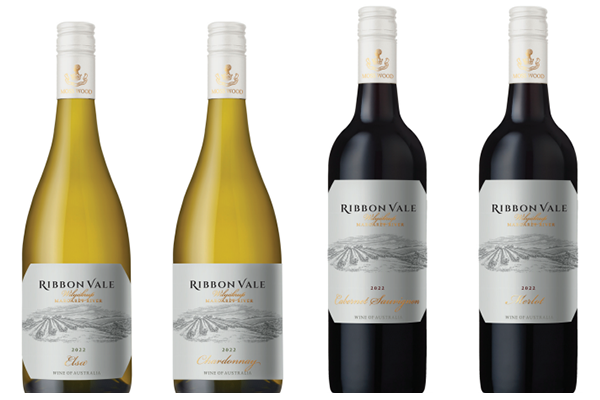
The Moss Wood Family has been Busy
Since we last wrote, we have had some additions to the Moss Wood team and exciting news to share! On the 17th October 2022, our senior winemaker and viticulturalist, Alex Coultas and his wife Betty welcomed Olive Elizabeth Coultas to their family. Not to be outdone, on the 21stDecember 2022, Tristan Mugford and his partner Rebecca Horton announced their engagement and now have plans for an October wedding. Finally, Hugh and Shauna Mugford became parents for the first time on the 3rd February 2023, after the arrival of baby Jack Charles Mugford.
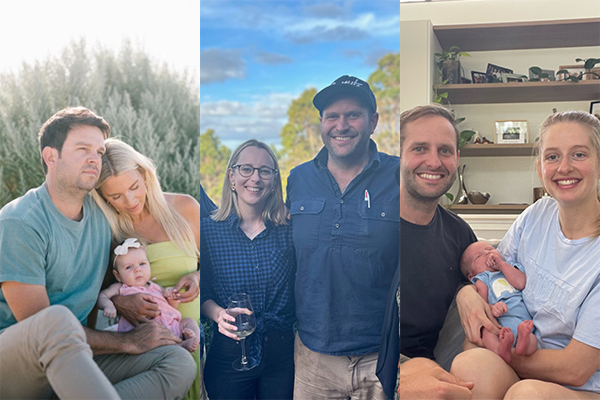
© FRANCES ANDRIJICH
© DANIELA TOMMASI
Order
OUR WINES:
Contact
MOSS WOOD:
Location: 926 Metricup Road, Wilyabrup WA
Postal: PO Box 225, Cowaramup WA 6284
Phone: +61 8 9755 6266
Fax: +61 8 9755 6303
Follow us on
SOCIAL MEDIA:

